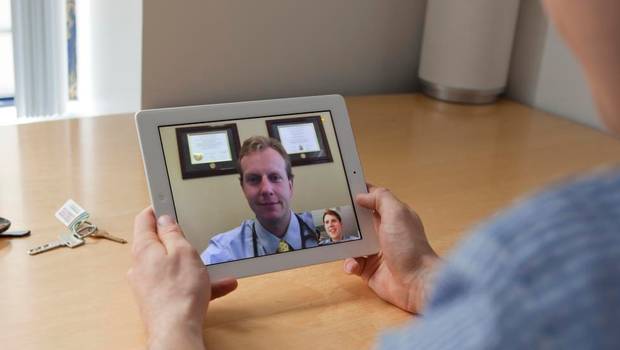Is Online Counselling a Good Fit for You?
For many people, the idea of engaging in counselling online gives them cause to wonder what the world is coming to. “Even the highly personal helping professions have gone the way of technology,” they may lament. “Whatever happened to the personal touch?” While it is true that for some, online counseling maybe a step backwards in terms of progress, for others it might be the perfect solution to a number of problems. Below, I will review some of the advantages and potential disadvantages of online counseling and then you can decide for yourself.
Advantages
1. Easy access
When counselling takes place online, it removes a number of possible barriers. The first of these are lack of time and inconvenience. A recent client survey revealed that the biggest barrier to continuing the change process was not lack of progress but lack of time. The time commitment is not just to the hour spent in the session but also in getting ready for the appointment, fitting it in around a busy schedule, etc. With online counselling, many of these logistical factors are eliminated from consideration. Heck, you don’t even have to wear pants, though try to remember that you’re not, in case you need to get up from your chair for any reason. And don’t worry; I always wear pants.

Speaking of pants, that’s me on the right. And yes, I always look this good.
In terms of scheduling, for many young families, the biggest barrier is childcare. Finding and paying a babysitter to watch the kids during a session can be difficult. With online counselling, appointments can be scheduled during kids’ naptime, after bedtime, or when they are being parented by Sesame Street.

Read me a story, daddy.
In addition, with the online platform, particularly the one I use Medeo, documents can readily be shared back and forth. Items such as receipts, invoices, homework assignments, articles to read, and other documents are available in real time. Even payment is easier. No chequebook, no trip to the bank machine. All that is needed is a PayPal account for credit card transactions or the ability to send an Interac E-Transfer through your online banking.

No longer required to see the counsellor
2. No travel time or cost
Some of my clients travel up to an hour to attend a counselling appointment with me, and while I appreciate their dedication to getting better, I can’t help but wonder how long their dedication can last when they have to invest three hours in an appointment, including the time in session. With online counselling, that time is completely and immediately eliminated. If your appointment begins at 1:00, you sign in about 5 minutes prior and when it is over, you sign out and you’re done.
It is always advantageous if an individual can spend some time after the appointment, reflecting on the discussion and perhaps making plans going forward. It is decidedly more difficult to do this if you are in a rush to pick someone up or get home, or just sitting in traffic. Seeking help for anger and aggression, followed by spending 30 minutes in traffic could be seen as a learning experience, but often it turns out to be more of an eraser of progress than anything else.

I’m just trying to find my #@%#$ happy place!!
Not to mention the increased convenience afforded by no travelling, there is a reduced cost to the client. No gas money required, less wear and tear on the vehicle, less picking up a few snacks at the gas station… Maybe that’s just me.
3. Greater selection with regard to counsellor fit
The reality is, if you are seeking counselling, you might not live in an area with many options for services. Smaller, remote locations generally find themselves in this predicament but bigger cities also have this limitation. Counselling is a bit like dating, in that there needs to be a good fit between the counsellor and client in order for things to progress.
Seeing a counsellor online allows the client to be as particular as they want when selecting someone to help. You might find someone online who is a great fit, only to find that their office is located 1-8 hours away from where you live. With online meetings, this is irrelevant.
4. Less anxiety
For many individuals, as I have referenced before, the biggest barrier to seeking help is the symptoms of the problem for which the client is seeking help in the first place. This is especially true with anxiety-related issues. The stress of driving, or asking for a ride, or finding the office without getting lost, or being on time, or meeting a new person in unfamiliar territory, or any number of possible disasters looms as a huge wall, with little hope of success.

Hello.. I’m the counsellor. Relax
I remember early in my education coming across a therapist in Arizona who specialized in social anxiety disorders. He ran a program that was 30 days long. The cost was $8000. Clients needed to make their own travel arrangements, either by car, bus, train, plane, etc., and provide their own housing and meals for the entire duration of the program. My first thought was, “If they can do all of this, why do they need the program in the first place?”
I still think that way. If a person with social anxiety can make their own arrangements and travel off into the unknown, they are already half way there. OK, maybe one-third of the way. However, many people find even the smallest of these steps to be overwhelming. For them, online counselling is the perfect fit. They can still get the quality help they need and want, but do so from the comfort of their own home, without the outside interference of factors beyond their control.
Disadvantages
1. No hugging
Of course, I’m just kidding, as a rule, I don’t hug my clients.

Let the healing begin..
2. No handshake
For some people, physical interaction, whether it be in the form of a handshake or the feeling of someone’s vibes, is of great value. Some people believe that you can tell a lot about a person by non-verbal and even metaphysical means. I’m not going to say that this is not true, but for those who hold that it is, then an online meeting would certainly limit your antennae in this area.

True, this is not typically part of the online counselling experience.
3. Technical difficulties
The biggest potential barrier that exists with technology-assisted counselling, is the technology itself. If you don’t have a high-speed internet connection, you might experience some problems with the picture freezing or an audio delay. Having said that, even the slowest internet speed (unless you still use a dial-up connection, in which case…) can usually handle video conferencing. All that is required is a half-decent computer (or smartphone with a good data plan, or tablet) with a half-decent webcam and you’re in business. That’s the hardware side of things. The good news is that there is no software component to master. To use the Medeo platform, you don’t need to download anything if you are using it on your computer, and if you want to use it on your phone or tablet, you just download the Medeo app.

Yup, It’s that easy.
Now, the truth is, some people are just intimidated by technology. They cower as some people throw around technical jargon like they’re showing off and let’s face it, usually they are. The reality is that the technical side of video-conferencing is not very technical. If you can enter a username and password, you’re good to go. I mean, heck, my 86-year-old grandmother is always bragging about chatting with her kids and grandkids online. She grew up the daughter of a dairy farmer in southern Alberta back when the idea of television was science fiction. Granted, my grandma is pretty dang awesome, but if she can do it, so can you.

Not my grandma. Possibly her internet rival.
If you are interested in giving online counselling a try, send an email to office@connectivitycounselling.com and see if it’s a good fit for you.


















































Recent Comments